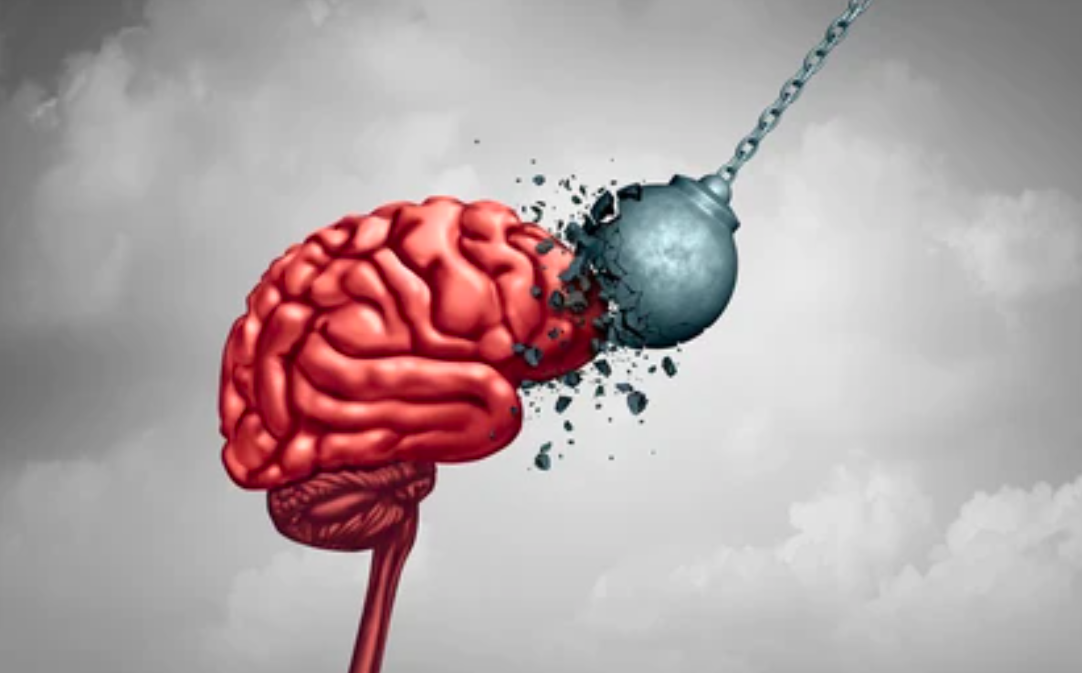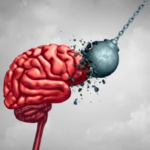
In Part 1, we covered what trauma is, the window of tolerance, types of traumata, and potential causes. Now, in Part 2, we explore the consequences of trauma, how it impacts our daily lives, and why the CIA seeks out individuals with trauma backgrounds. Could there be a silver lining to trauma responses?
Consequences of Trauma
“Unresolved trauma impacts every level of the body-mind-soul system, shaping our sense of self and the world.” – Verena Koenig, Trauma therapist
All animals, including humans, have built-in survival systems. Our brains and bodies are programmed to survive, reacting to adversity with strategies that increase our chances. These strategies, known as coping mechanisms or trauma responses, profoundly shape our lives.
The impacts of trauma reach every aspect of our functioning—not just mentally, but down to a cellular level. This article highlights eight key points, addressing physical, mental, emotional, psychological, and behavioural consequences.
(Note: Effects of trauma are interconnected, impacting body and brain systems holistically. The categories below are broad classifications.)
1. Trauma Changes the Brain and Nervous System
It can be easy to observe trauma responses expressed behaviourally, but it is important to understand that the effects are much more profound. Trauma changes our ‘hardware’, altering the state and functioning of the brain. For example, it makes regulating emotions more difficult, increases sensitivity to stress, and impacts implicit and explicit memory and cognition. Keep this in mind when reading the following consequences.
2. Trauma Is the Root Cause of Mental Illness
Mental illness and behavioural issues do not appear randomly. In most cases, there is underlying unresolved trauma. When a person experiences pain caused by trauma and develops a drug addiction, the addiction is not the problem — it is their way of coping with the pain. We don’t see the problem; we see the (attempted) solution. The pain from the trauma is the real issue. Substance abuse, eating disorders, and other ‘mental illnesses’ are symptoms of deeper wounds. If someone cannot self-soothe to cope with their pain, they may turn to alcohol or food for numbing. Research shows that nearly all (over 95%) adolescents receiving treatment for substance abuse have a history of trauma.
3. Mental, Psychological, Behavioural, and Emotional Effects
- Examples of trauma consequences (random order): Avoidance, self-isolation, self-destructive behaviours, mood swings, hyper-vigilance, dissociation, low self-esteem, anxiety, depression, co-dependency, lack of identity, lack of boundaries, chronic shame, and loneliness.
- Attachment and trust issues: Difficulty or inability to form and nurture healthy relationships.
- PTSD (noting that not everyone who experiences trauma develops PTSD).
- Perfectionism: Constantly striving to avoid mistakes to prevent getting into trouble or failing.
- Overanalysing situations in an attempt to ensure personal safety.
- Heightened empathy: Quickly and easily detecting emotional shifts in others to avoid conflict.
- Emotional avoidance: Suppressing feelings due to past experiences of compromised emotional safety.
- Hyper-independence: Rarely or never asking for help, believing no one cares, and avoiding connections due to fear of abandonment.
- Over-explaining: A response developed from “walking on eggshells” around emotionally reactive people.
“You don’t need court-level proof of why you are or are not doing something. Keep it short. You are safe now.” – Dr Nicole LePera, Therapist.
4. Physical Health Implications
- Autoimmune disease: Childhood trauma can contribute to the development of autoimmune disorders in adulthood.
- Trauma survivors are more vulnerable to chronic pain, insomnia, and obesity and are three times more likely to experience a heart attack compared to those without significant trauma.
- Chronic fatigue, aches, and tension.
- Psychosomatic manifestations: Eczema, abdominal pain, chest pain, headaches, acne, and hair loss.
5. Age Regression
Trauma can freeze a part of us at the age it occurred, meaning a person may remain emotionally stuck at that age and feel as if the trauma is still happening. “It is possible to be an adult with a much younger part of you running your life, business, or relationship.” – Mastin Kipp.
In extreme cases, when a person gets triggered into reliving a trauma experienced at a young age, they may “fall back” into a child-like state, using in child-like language or becoming non-verbal if the trauma occurred before they could speak.
6. Dissociative Identity Disorder (DID)
Content warning: This paragraph mentions abuse. DID is a severe mental health disruption where the identity of a person splits into multiple personas. I am using this extreme example to illustrate how our psyche forms. As we grow up, we accumulate countless experiences that typically merge to form our personality—piece by piece. In cases of trauma, an element may not integrate and remain ‘split’ (as mentioned in point 5). DID develops in response to severe trauma, often when a child is repeatedly abused and subjected to life-threatening situations. If the child cannot escape this abuse, their psyche splits, as the integration of all elements would be unbearable. That can result in a person developing multiple distinct identities which are not necessarily connected. The mind is fragmented, and each identity may have access to different memories. Each identity could have a different age, gender, voice, and other differentiating features. While this is an extreme example, it demonstrates the complexity of the human body and mind and how we are ‘adjusting to‘ and surviving traumatic experiences.
A reminder: If you enjoy my work, here is a way to support Neuroscience Musings (via Ko-fi). If you choose to do so – Thank you!
7. Trauma Is Stored in the Body and Revealed in Relationships
This statement may seem self-explanatory, but it is important to emphasise that most trauma is caused by relationships with others, often with caregivers. The symptoms of trauma frequently play out in relationships with others (examples of this behaviour are mentioned in point 3). These reactions, often labelled as “symptoms,” are actually survival mechanisms we developed early on.
“The ways that you survived as a child are evident in what gets called your ‘symptoms’ as an adult.” – Unknown
Food for thought: Where is the line between a coping mechanism and personality?
8. For many trauma survivors, doing battle comes easy, but trust and intimacy may be difficult.
Trauma stresses the system, activates survival responses, and can keep the nervous system in a hyper-vigilant state. However, building loving and carefree relationships with others requires a certain level of relaxation and trust. That can initially feel scary and unsafe.
Is There a Silver Lining to Trauma Responses?
The idea that “What doesn’t kill you makes you stronger” has long been debunked. However, are there any benefits to trauma responses?
In today’s world, many traumatised people are highly successful – if we define success by status and profit. For example, hyper-independence is celebrated in our individualistic society. Additionally, a lack of empathy (e.g., due to emotional numbing), hypervigilance, and an overamplified need to prove one’s worth through achievement can make a person incredibly successful in business. These examples demonstrate that the way society often defines success does not align with the definition of health.
Now, why does the CIA seek to hire individuals who have experienced trauma? There are two main reasons:
- Heightened awareness: People who have experienced trauma can be extremely aware of their surroundings, highly sensitive to changes in a person’s mood, and able to detect the smallest shifts in someone’s voice or behaviour. They can “read” people exceptionally well. Hyper-vigilance can be a valuable tool in the work of the CIA.
- Weaker social ties: People who grew up in difficult circumstances often have weaker family bonds and less close social networks. This makes it easier to isolate them and recruit them into the CIA system (e.g., as spies) without “outsiders” being aware of their involvement.
So, what is the verdict on whether there is a silver lining to trauma responses? I would love to hear your thoughts!
Closing Thoughts
Trauma has a profound and far-reaching impact, shaping how individuals think, feel, and navigate the world. By deepening our understanding of trauma, we foster greater empathy and connection. Additionally, we become more mindful of our actions and words, reducing the risk of unintentionally causing harm. Knowledge of trauma is essential—not just for healing but for creating a society where future generations, especially children, can grow in environments that nurture resilience, compassion, and emotional safety.
What do you think about this topic? Do you think most people are aware of the consequences of trauma? I’m always happy to hear from you! (Find me @neuroscience.musings.)
Best regards,
Sarah
Resources:
- König, V. (2021). Bin ich traumatisiert? Wie wir die immer gleichen Problemschleifen verlassen. Gräfe und Unzer.
- Dorahy, M. J., Brand, B. L., Şar, V., Krüger, C., Stavropoulos, P., Martínez-Taboas, A., … & Middleton, W. (2014). Dissociative identity disorder: An empirical overview. Australian & New Zealand Journal of Psychiatry, 48(5), 402-417.
- https://open.spotify.com/episode/0kjDzFn0FMkwbVW5wNBMv6?si=kwvUtyzxSWuI_VA_BKHVmA

